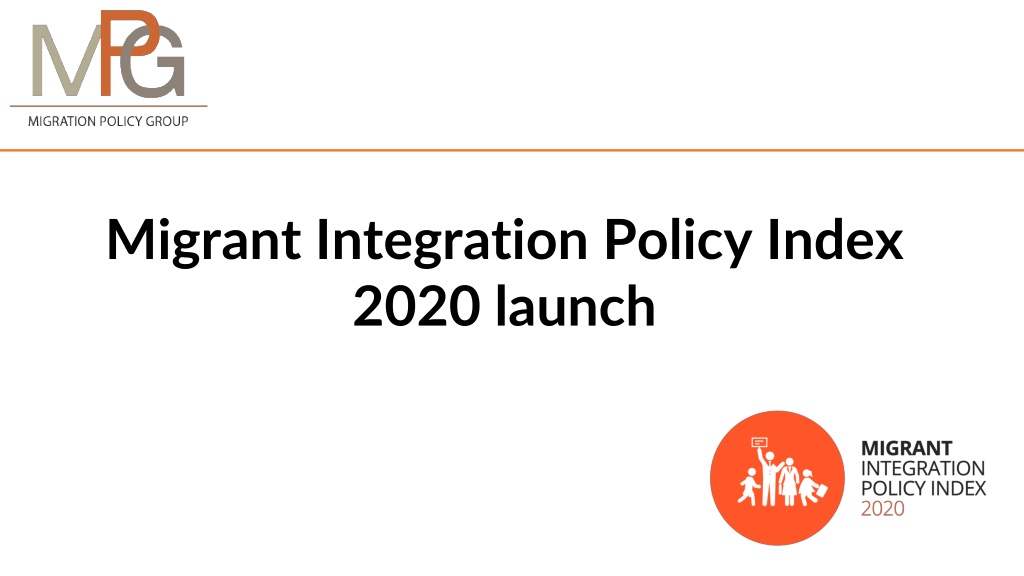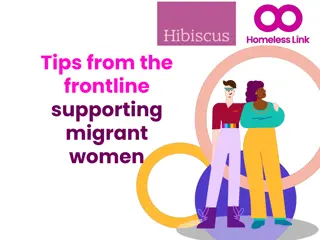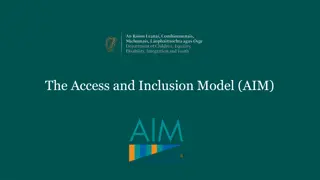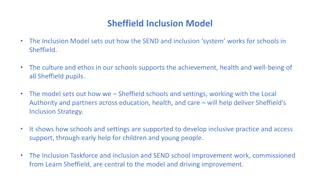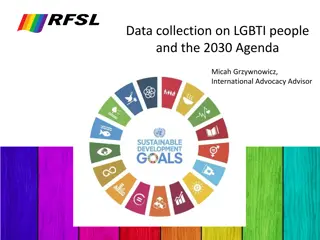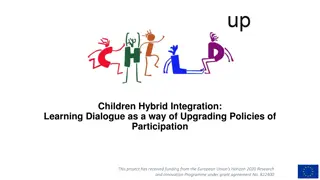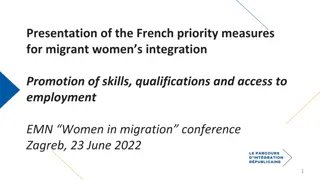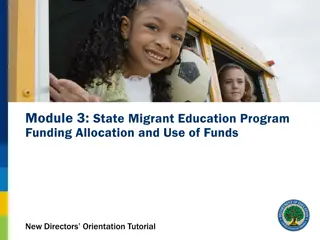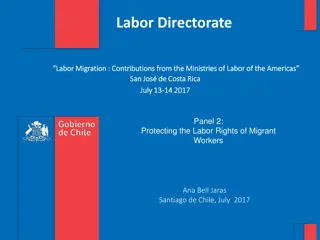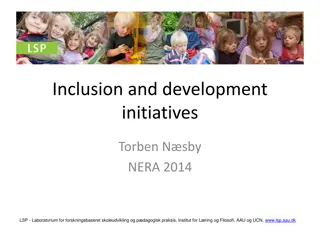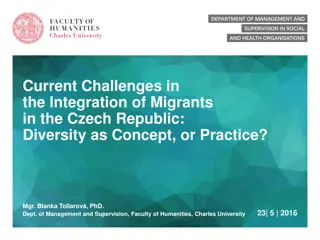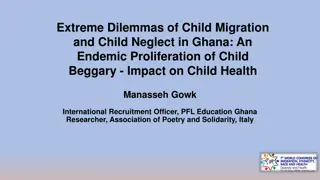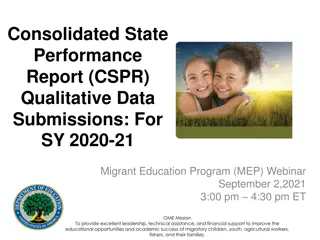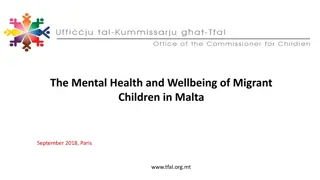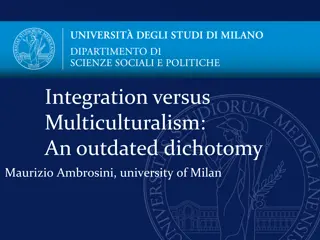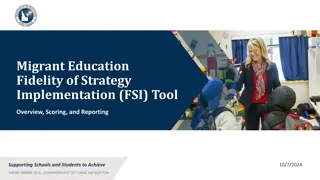Understanding Integration Policies for Migrant Inclusion
The Migration Policy Group (MPG) focuses on achieving progress towards open and inclusive societies through informing policy agendas on anti-discrimination, legal migration, and integration. Through tools like MIPEX, they compare integration policies using indicators such as basic rights, equal opportunities, and a secure future. The top ten countries with comprehensive integration approaches ensure equal rights, opportunities, and security for immigrants and citizens. In contrast, countries with less comprehensive policies may only provide equality on paper, but not in practice.
Download Presentation

Please find below an Image/Link to download the presentation.
The content on the website is provided AS IS for your information and personal use only. It may not be sold, licensed, or shared on other websites without obtaining consent from the author. Download presentation by click this link. If you encounter any issues during the download, it is possible that the publisher has removed the file from their server.
E N D
Presentation Transcript
Migrant Integration Policy Index 2020 launch
What is Migration Policy Group? For 25 years, MPG s mission has been to achieve lasting progress towards more open and inclusive societies. MPG is focused on informing the policy and legal agenda on anti- discrimination, integration and legal migration, while contributing to all activities that bolster the resilience of the sector. We create data-driven resources, collect evidence in a pan-European manner, organise campaigns, and engage in extensive outreach. 2019 Migration Policy Group
What is MIPEX? Most comprehensive tool to compare integration policies: Number of indicators Methodology with national experts & checks Longitudinal scope (2007-2019) Thematic scope (including health) Geographic scope (52 countries) Most cited international benchmark used by global actors, NGOs, media & researchers Example: Draft Global Compact on Migration recommended participation of all States in MIPEX to identify challenges & best practices Compact for Safe, Orderly and Regular Migration Draft REV 1, 26 March 2018, section 30(a), p. 18). 2019 Migration Policy Group
Countrys approach to integration Use of core indicators captures country s approach to integration on 3 dimensions: Basic rights: Can immigrants enjoy comparable rights as nationals? E.g., equal rights to work, training, health, and non-discrimination Equal opportunities: Can immigrants receive support to enjoy comparable opportunities as nationals? E.g., targeted support in education, health, and political participation Secure future: Can immigrants settle long-term and feel secure about their future in the country? E.g., family reunification, permanent residence and access to nationality. 2019 Migration Policy Group
Countrys approach to integration Based on these dimensions, we found 5 main approaches to integration Top Ten countries: Countries in this group represent the top ten out of MIPEX52 countries. A comprehensive approach to integration guarantees equal rights, opportunities and security for immigrants and citizens. Policies generally encourage the public to see immigrants as their equals, neighbours and potential citizens. Comprehensive integration. A comprehensive approach to integration guarantees equal rights, opportunities and security for immigrants and citizens. However, policies in these countries are less comprehensive and advanced than in the 'Top 10' MIPEX countries. In these countries, policies do not always encourage the public to see immigrants as their equals, neighbours and potential citizens Equality on paper. Equality on paper means that immigrants enjoy equal equal rights and long-term security, but not equal opportunities. Policies generally encourage the the public to see immigrants as their equals, as potential citizens, but also as strangers rather than as neighbours. 2019 Migration Policy Group
Countrys approach to integration Based on these dimensions, we found 5 main approaches to integration Temporary integration. Temporary integration means that immigrants enjoy basic rights and equal opportunities, but not equal security, as they face obstacles to settle long-term. Policies generally encourage the public to see immigrants as their equals and neighbours, but also as foreigners rather than as potential citizens. Immigration without Integration. Immigration without integration means that immigrants are denied basic rights and equal opportunities, even if they are able to settle long-term in the country. Policies may encourage the public to see immigrants as subordinates and as strangers. 2019 Migration Policy Group
MIPEX links integration policies & outcomes Links between policies & outcomes: 130 peer reviewed scientific studies linking MIPEX to integration outcomes for immigrants & the public The major disparities in integration policies around the world reflect the major differences in integration outcomes and attitudes around the world. The integration policies identified by MIPEX also shape how immigrants and the public respond to these inequalities. 2019 Migration Policy Group
Dozens of studies link policies & public opinion 2019 Migration Policy Group
New studies link policies & immigrant attitudes 2019 Migration Policy Group
Dozen studies link policies & migrant health 2019 Migration Policy Group
